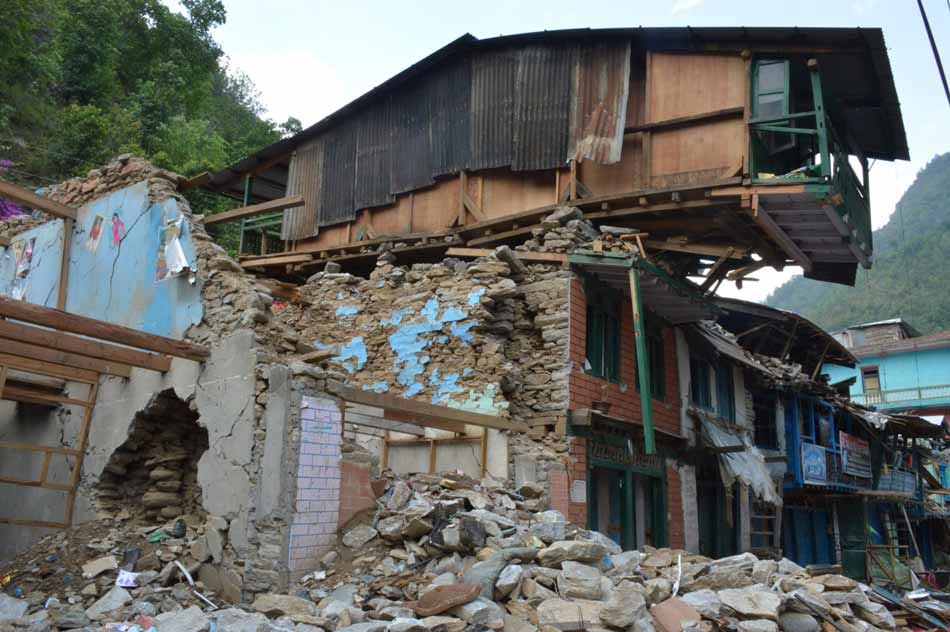Ductility describes the extent to which a material (or structure) can undergo large deformations without failing. The term is used in earthquake engineering to designate how well a building will endure large lateral displacements imposed by ground shaking.
Stiffness is a measure of how much force is required to displace a building by a certain amount. If it requires more force to shift Building A than Building B, we would say that Building A is stiffer. Stiffness can be advantageous with respect to earthquake damage because it can limit the deformation demands on a building.
You can, however, have too much of a good thing. A structure that is too stiff (often referred to as brittle) will be prone to failure under relatively small deformation demands. An example of a brittle structure is an unreinforced masonry building, which will tolerate very little displacement before the onset of damage and failure.

A ductile structure's ability to contort and dissipate energy during an earthquake is, therefore, also advantageous as it will keep deforming without reaching ultimate failure or collapse. An example of a ductile structure is a properly detailed steel frame with a degree of elasticity that will enable it to undergo large deformations before the onset of failure.
Building Codes
Prior to 1975, building codes and construction standards in the U.S. did not have explicit ductility requirements. As a result, most pre-1975 buildings that have not been seismically upgraded are believed to be non-ductile. Many such structures demonstrated brittle failures during past temblors, such as the 1971 San Fernando earthquake.
It was only after 1975 that seismic design codes and construction standards began to establish ductility requirements for buildings in areas of high seismic risk. Most recently, improvements in the construction standards of ACI-318-2011 (Building Code Requirements for Structural Concrete and Commentary) and AISC-341-2010 (Seismic Provisions for Structural Steel Buildings) were integrated directly into seismic design codes. For steel structures, AISC-341-2010 required more stringent detailing for welded connections in steel moment-resisting and braced frames, as well as for composite structures in which concrete elements are reinforced with structural steel sections. Similarly, ACI-318-2011 improved the requirements for steel confinement in the most critical sections of concrete columns and walls.
Explicitly Accounting for Ductility in the AIR U.S. Earthquake Model
Through studying the evolution of design and construction standards for steel and reinforced concrete structures, AIR engineers have been able to assign ductility classes for different regions and time periods in the U.S. This understanding of how ductility detailing requirements have changed over time allows the vulnerability of more ductile structures to be modified appropriately to reflect the impact of both reduced initial stiffness and increased deformation capacity.
The current AIR Earthquake Model for the U.S. implicitly accounts for ductility in assigning code levels related to the design seismic base shear demand at a given location during a particular period of time. In the updated AIR Earthquake Model for the U.S.—set for release next summer— ductility is explicitly accounted for in the damage functions for steel and reinforced concrete buildings.



